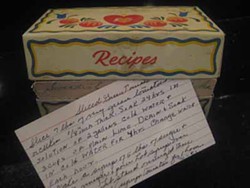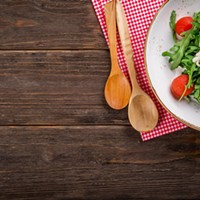My grandmother's recipes are a collection of spotted index cards and tattered newspaper clippings bound together with a handful of aged, colored rubber bands in a give-away Rumford Baking Powder cookbook. Another ancestor valued her Chess Pie recipe to such an extent that she wrote it into the centuries-old family Bible. I didn't discover that recipe until I stumbled upon the verse.
While I am grateful that I have many family recipes, the majority of family recipes are isolated in the memory stores of a particular person. Many years ago, though, I became the pest -- the family member who wanted to learn how to make Aunt Sue's broccoli casserole and Aunt Celia's chocolate layer cake. I watched as one family member made barbecue sauce (an all-day event), and another hand-cranked mayonnaise in a Mason jar.
Too often, though, I said I would get a recipe, but the opportunity was lost. Food writer Marcelle Bienvenu and food editor Judy Walker discovered this to be true when they set about to reconstruct the New Orleans home cook recipes files lost to Katrina in their Cooking Up A Storm: Recipes Lost and Found from The Times-Picayune Of New Orleans (2008).
Who wouldn't want the family turkey dressing recipe or sweet potato pie? But comfort foods -- macaroni and cheese, meatloaf, peach cobbler and, if you are from the Carolinas, barbecue -- demand a spot, too. Likewise, links to your culinary ethnic past should be preserved: Christmas Tamales, Linzer Tortes, and Anthony's Hummus. Even if Uncle Henry's fruit cake is now used as a doorstop, his recipe may appeal to someone else, or come back into style. I keep telling myself that with all the gelatin recipes I come across.
What do you need in order to gather up your family's recipes? First, make a list of the recipes you do not want to lose. Even if you are not a cook, you will never regret preserving family recipes. Ask siblings and other relatives which recipes they would want to include in a family cookbook. You should think about collecting at least 150 recipes.
Next, spend time with the people who make those recipes and learn how they are made. Watching, though, is not always instructive: Some home cooks will use a little bit of this and a pinch of that. To counter this, you will need to measure or weigh all the ingredients that will be used for a recipe before the cooking session begins. Then you will need to weigh or measure the remaining ingredients at the end of the session. The difference, of course, is the recipe.
Sometimes a specific brand can make a difference in a recipe. For those who grew up in the South, Southern flours -- such as White Lily or the recently defunct Red Band -- were chosen for their baking properties in cakes and pastries. Try to use a similar brand.
Be aware, though, that your recipe may be incomplete. In some ethnic communities, revealing an entire recipe only occurs after the vows of marriage. In other words, if you have an old boyfriend's recipe for his mother's Italian cheesecake, it may be an amped-up, incomplete parody of the original.
Once you have collected the recipes, divide the recipes among the headings: starters; stews and soups; salads and slaws; vegetables; grains, rice and potatoes; pork; chicken and poultry; beef, lamb and game; fish and seafood; desserts; breakfast and brunch; cornbreads and breads; pickles, chutney and jams; and beverages. Each category should have at least 10 recipes.
Your recipes should have creative titles, a head note that is an introduction to the recipe, an attribution if you know it, the list of the ingredients, and the preparation. Make sure you record the size of the ingredient: A can of tuna may vary from 5-1/2 ounces to 7 ounces. Write the recipe in tested order of preparation and include a secondary recipe if one is required.
It may take a few seasons to gather the recipes you want, and you can save time by taking photographs along the way. Once you have the recipes and photographs (although there are many shareware photographic sites), look for an online publisher. Adobe is one option, while other sites are as simple as point and click. Both LuLu.com and Blurb.com, for example, have easy tutorials. Additionally, Lulu will list your cookbook for sale on Amazon for a fee as well as sell you a variety of upgrades. The price of your cookbook will vary by the number of pages, number of copies, and the choices (color, hardbound) you make.
Last, before you click that tab to publish, enlist a friend to help you proofread your copy. Or even try out a few of your family's big hearty rustic dishes or evocative desserts. Wolfe was wrong: You can go home again.
Know of a restaurant that has opened, closed, or should be reviewed? Does your restaurant or shop have news, menu changes, and new additions to staff or building, upcoming cuisine or wine events? To be included in our online blog, Eat My Charlotte, send information to Tricia via e-mail (no attachments, please -- these are destined for the spam filter): tricia.childress@creativeloafing.com.
Latest in Food & Drink Features
More by Tricia Childress
-
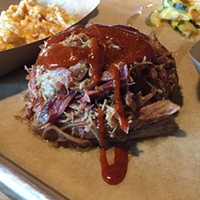
Seoul Food Meat Co's got soul
May 4, 2016 -
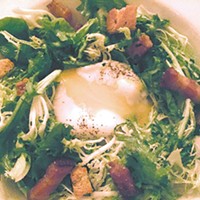
Aix en Provence flourishes in Myers Park
Apr 6, 2016 -
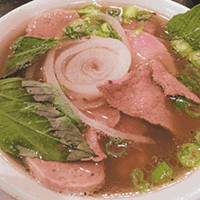
Pho and beyond at Saigon Bay Vietnamese Cuisine
Mar 2, 2016 - More »
Calendar
-

Charlotte Wine & Food Week’s Annual Sake Dinner at Mizu @ Mizu
-

Hands On Cocktail Class Featuring Gin at DTR Southpark @ DTR SouthPark
-

Angeline’s Featuring Sciandri Family Vineyards @ Angeline's
-

Aria Tuscan Grill Featuring Allegrini - Charlotte Wine + Food Week @ Aria Tuscan Grill
-

Charlotte Wine + Food Week Presented by Truist @ Charlotte, NC
-
Recipe: Ice Cream Sundae Cupcakes 6
These Ice Cream Sundae Cupcakes are filled with chocolate ganache and topped with vanilla buttercream.
-
Back of the Box: No Boil Classic Lasagne 5
Not having to boil the noodles rocks!
-
Authentic & Delicious Indian Restaurant Botiwalla NOW OPEN in Optimist Hall! 2

